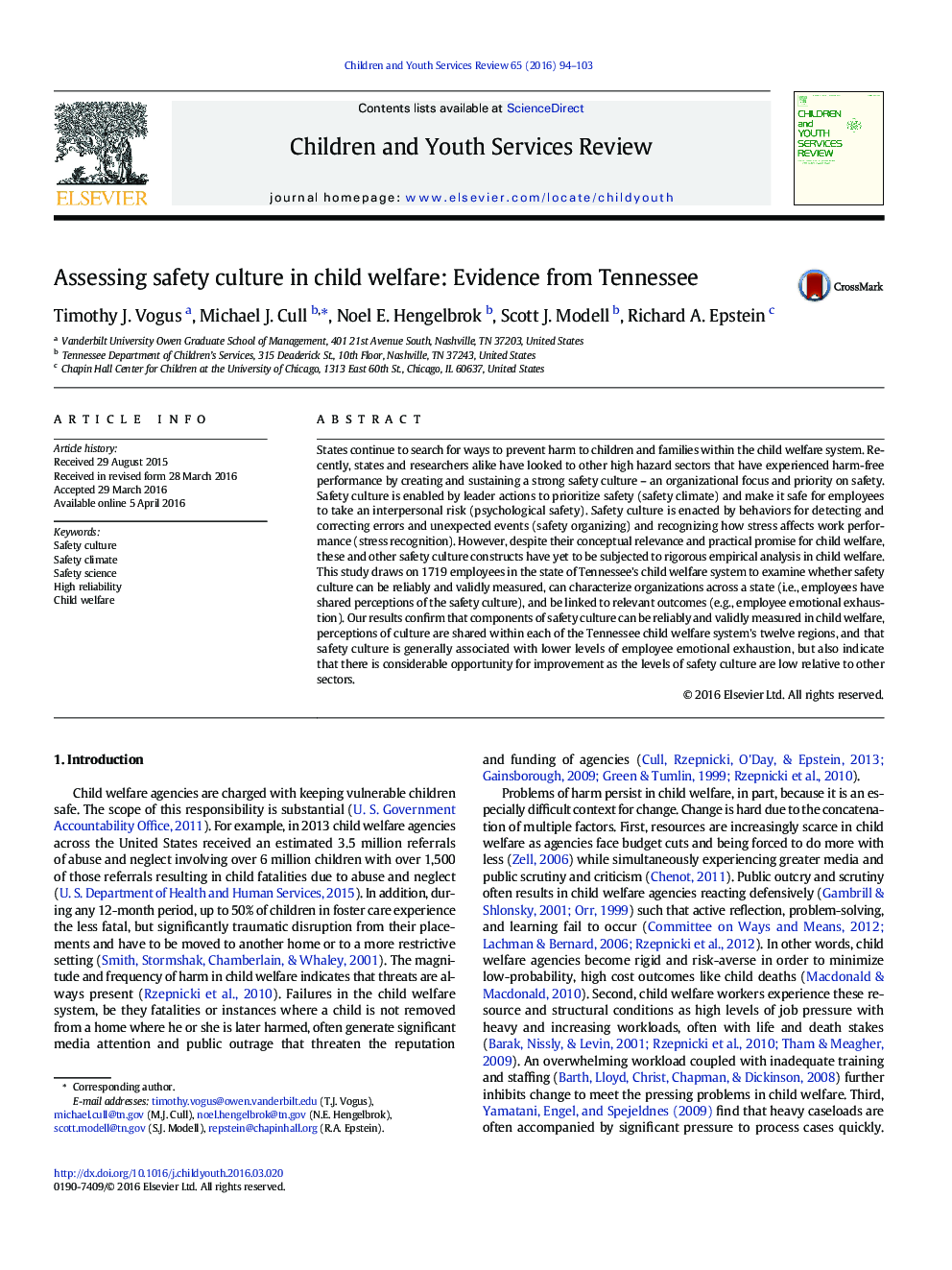| کد مقاله | کد نشریه | سال انتشار | مقاله انگلیسی | نسخه تمام متن |
|---|---|---|---|---|
| 345811 | 617768 | 2016 | 10 صفحه PDF | دانلود رایگان |
• Safety culture is of increasing interest for managing harm in child welfare.
• Currently lack rigorous measurement of safety culture in child welfare
• Safety culture can be reliably and validly measured in child welfare.
• Safety culture is associated with lower levels of employee emotional exhaustion.
• Observed levels of safety culture are low relative to safer sectors.
States continue to search for ways to prevent harm to children and families within the child welfare system. Recently, states and researchers alike have looked to other high hazard sectors that have experienced harm-free performance by creating and sustaining a strong safety culture – an organizational focus and priority on safety. Safety culture is enabled by leader actions to prioritize safety (safety climate) and make it safe for employees to take an interpersonal risk (psychological safety). Safety culture is enacted by behaviors for detecting and correcting errors and unexpected events (safety organizing) and recognizing how stress affects work performance (stress recognition). However, despite their conceptual relevance and practical promise for child welfare, these and other safety culture constructs have yet to be subjected to rigorous empirical analysis in child welfare. This study draws on 1719 employees in the state of Tennessee's child welfare system to examine whether safety culture can be reliably and validly measured, can characterize organizations across a state (i.e., employees have shared perceptions of the safety culture), and be linked to relevant outcomes (e.g., employee emotional exhaustion). Our results confirm that components of safety culture can be reliably and validly measured in child welfare, perceptions of culture are shared within each of the Tennessee child welfare system's twelve regions, and that safety culture is generally associated with lower levels of employee emotional exhaustion, but also indicate that there is considerable opportunity for improvement as the levels of safety culture are low relative to other sectors.
Journal: Children and Youth Services Review - Volume 65, June 2016, Pages 94–103
